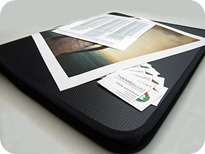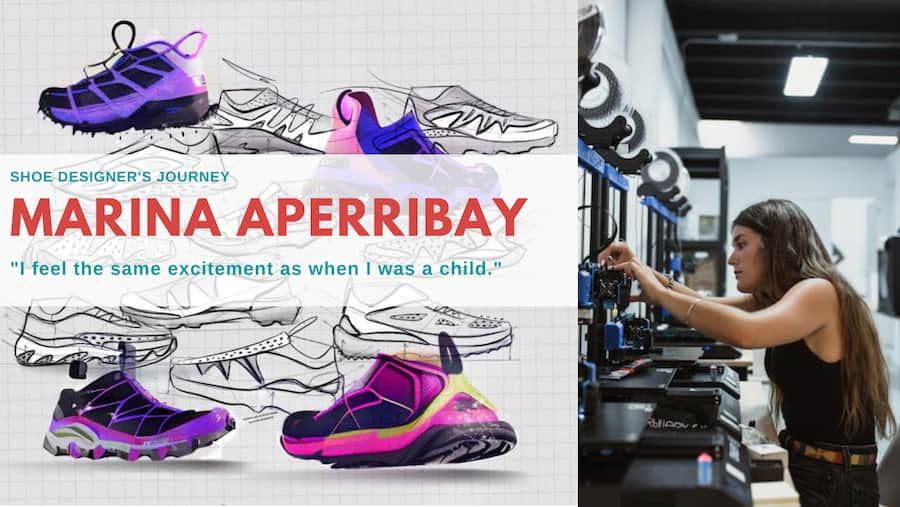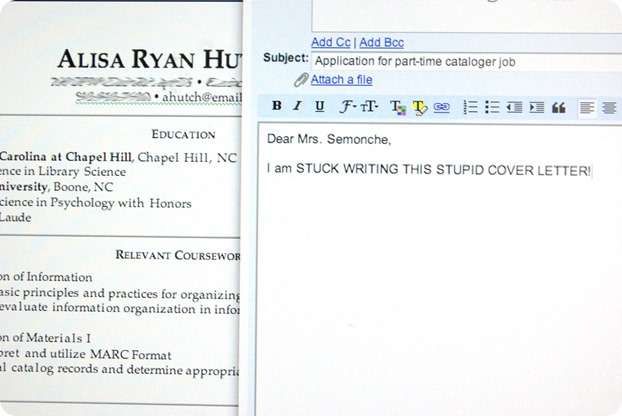
I also brought up the idea that a portfolio is made firstly to be your business partner, and only secondly to be aesthetically pleasing.
Though your portfolio also shows off your personality, its main objective is to get an interview and get you hired.
Most recruiters will be looking for what you can bring to the company, so make sure your portfolio shows that off!
The market is, of course, competitive. Too many students and young graduates apply blindly to any job offer going.
This may raise your chances of being seen, but you may also be ignored.
Let’s talk about how to take the stress of the job market and channel it into production and excitement.
Before you apply to a job, take a moment to consider your priorities, and make sure you know what you want most.
That will be your touchstone as you make your way through the interview process.
TIP 1: Feel Passionate, Act Passionate
Remember how insanely excited you were when you got accepted to your design school? You decided to join a design program out of passion. Look for an internship or a job for the same reasons you applied to your school. I know how tempted we all are to find a secure position as quickly as humanly possible. But with a few simple tricks and some good time management, you can have the chance to find a company you really love working with.
TIP 2: Always, Always Believe in Yourself
According to the Roman philosopher Seneca,
“If one does not know to which port one is sailing, no wind is favorable.”
This quote should be taken with a grain of salt; sometimes being able to navigate difficulties is more important than a detailed long-term plan.
In my fourth year of product design, I diligently outlined my incredibly detailed long-term career plan to one of my teachers. Because that’s all so easy to predict, right?
I was only talking to feel more secure – I don’t even remember what I told her. I do remember when she informed me that there is no point in trying to plan everything.
Life is full of the unexpected, and so long as you love what you do, opportunities will come your way. Plan the future will give you a direction but know that most of it may not happen.
Relax!
Life is full of ups and downs as a heartbeat is.
It’s full of unknown parameters, some positive and some negative. Whatever path you take, if you believe in yourself and your abilities you will be able to enjoy it.
You’ll fail, sure, but each day you’ll remake a better version of yourself. This is where you will build the strength to get what you want.
TIP 3: Know What Thrills You
It’s pretty common for a student to feel confused or disoriented over their career plan. Some students might know straight away that they want to design, say, sports cars, but most spend a lot of time wondering what to do.
First of all, each designer is unique, so don’t waste your strength comparing your goals to those of your peers. Identify what resonates most with you.
But how?
1. Write down a physical list of all the things you like about design.
It could include categories like:
- Types of products (watches, jewelry, sneakers, sports equipment)
- Values (environmentalism, helping those in need, increasing company sales, creating groundbreaking products, designing awesome children’s toys, life-hacks)
- Parts of the creation process (sketching, sculpting, painting, creating engineering pieces, coming up with concepts)
- Self-satisfaction (finally seeing the physical product, seeing people enjoy using your products)
- Brands (Apple, Decathlon, Citroen)
- Culture (Mixing traditional and modern Japanese culture, the growing and challenging market in China, the innovation of the European and American marketplace…. Don’t hesitate to look at foreign countries. Design is an international language.)
- And make up more!
2. Next, rank what you’ve listed – do this solely with your heart and gut instinct. You’ll look at it practically later. By starting like this, you’ll begin to shape a future scenario you feel good about.
There are as many types of design jobs as there are flowers on Earth. You could focus on mass markets, jewelry, technology, urban furniture, sporting goods, watches, yachts, and so on. There is infinite diversity out there if you’re just willing to grab for it. You may end up loving all of these and choose to work for a design agency instead of an integrated design department.
Remember too that some students just go ahead and start up their own companies straight after graduation. They prepare for this during their studies, and being an entrepreneur in the early stages is definitely worth considering.
TIP 4: Write an Inspired Cover Letter
- Turn the relatively low-energy process of sending out a boring mass email into an exciting game. Think of it as a challenge to win.
- If you’re excited about a job – a new challenge – you’ll feed that excitement into your cover letter.
The recruiters will sense your passion and motivation; those things are hard to fake.
If you don’t write well, simply ask someone to review your letter before you send it. There is nothing wrong with asking for help.
TIP 5: Make Time Your Friend

TIP 6: Think Big!
By “think big” I don’t mean big companies, a big salary, or a big office. I mean that you should give lots of value to your own dreams and desires, not keep them limited and small.
Some of you may be stressing out, worrying that a designer isn’t successful unless they work for some well-established multi-billion dollar company.
- Don’t be too seduced by big business; always remember to double-check the role given to designers in each specific company, no matter how big it is.
- Also, expand your research to smaller companies; don’t underestimate them. Maybe they have a huge network and a number of partners. Some smaller companies also have awesome politics and philosophies.
It’s a good idea to meet the management and get to know their vision; helpfully, they’ll be more approachable in small companies.
Also, with less of a hierarchy, you’ll have a greater chance to show off your talents and become a key player in the development of the company.
Think big!
Once again, I should say that there is no One Plan that is superior to others. It all depends on your own personality and needs.
TIP 7 Don’t be perfect, do your best
In the design industry, you often hear the phrase “There is only room for the best”. It’s true that the market can be quite competitive, but keep in mind that
An interviewer is not looking for the best and most talented candidate, but for the most suitable one.
(You may not be the best or most experienced, but you may be the greatest fit for the company needs!)
- Don’t wait to be perfect or you’ll wind up doing nothing. Joining a company is a human adventure.
- You may not be perfect, but you can join up and grow along the way. So even if you’re looking at a company that seems impossible to your limited reach, TRY ANYWAY.
- Never assume that you can’t make it and refrain from applying. That way you’re just closing the door on yourself, even if someone on the other side of it might be happy to meet you, given half a chance.
It’s your job to reach out and make the connection.
TIP 8: Gimme Your Top Picks
Even if you’re a beginner give yourself a chance to be picky.
Create a top 5 list of the companies you’ve been thinking of applying to.
- Apply only to them.
- Look at their advertised job offers; if they don’t have any, apply anyway. After this, prepare a second-choices list that you will apply to later. You would rather receive a positive answer from any of your top 5 picks before you apply to the second list.
- If you think you like a company but don’t have a lot of information you can still ask for an interview. It will be the best opportunity for you to ask your questions. You won’t be able to find everything on the internet, though it’s always good to explore.
To give an example, I can remember one day when I was at a company as an intern and a stranger knocked on the office door.
He was a student who didn’t know much about the company but wanted to know more. So he simply came in and met the design team. He may have left without leaving an application, but he did make a good impression.
TIP 9: Dig Up Information Like a Journalist
- Wear your journalism cap for a day. You’ll have people tell you, fairly often, to do some research on a company you’re applying to.
That’s definitely the correct course of action, but often we only do it for the sake of answering a couple of interview questions.
If you seriously want to join a company, you need to research with a real interest in that company and what it stands for, not just to pass a test.
Research because you want to share things with the interviewer, maybe even impress them by teaching them something new!
- Let yourself naturally explore more than needed for the interview, and start by looking at main competitors, the market, and any science or upcoming technologies that relate to the company.
I hope this article is helpful. I will post by Friday an article about the day of the interview itself. Stay tuned!
To read the same topic:
HOW TO TURN YOUR PORTFOLIO INTO A MARKETING WEAPON
14 INTERVIEW HACKS TO SUCCEED WITH CONFIDENCE











2 comments